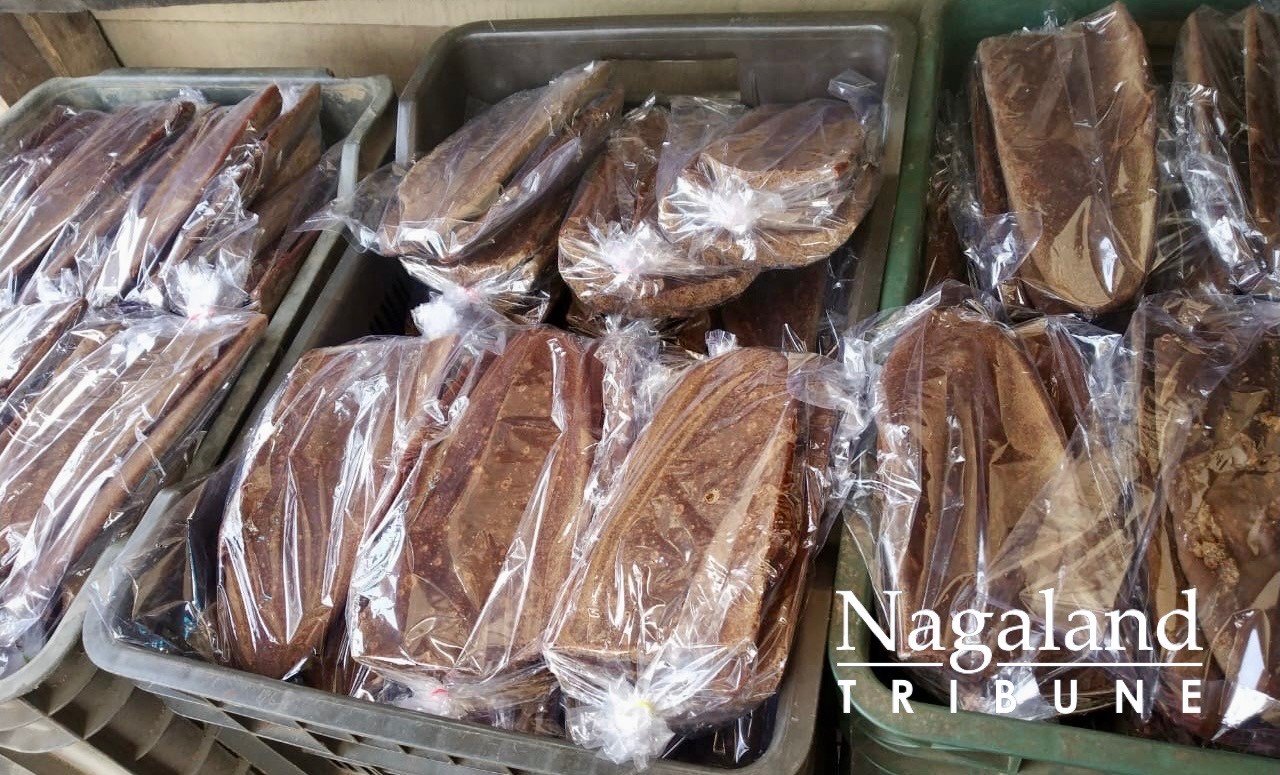Jaggery, also known as Gur, is a wholesome traditional sweetener containing natural goodness of minerals and vitamins inherently present in sugarcane. Loaded with vitamins A, B1, B2, B5, B6, D2, and E it contains calcium, potassium, magnesium, iron manganese, sodium, zinc, and copper, the demand for jaggery is on a rise as we speak with some even calling it a superfood.
Sugarcane has been cultivated in Nagaland for generations, but processed sugar is a recent addition to the diet of Naga people. While the consumption of white sugar in the modern day has reached a dangerous high, Jaggery remains a luxury in many ways as it is produced in small batches in pockets of the state.
Download Nagaland Tribune app on Google Play

Yanpvuo Kikon, a 50-year-old farmer from Tsungiki Village under Wokha District, makes a living through small scale jaggery production.
Talking to Nagaland Tribune, Kikon said that he started off his jaggery business in 2006 in the hope of making his living. There was lack of other business options, and then the hardship to secure a job, be it private or government, he stated.
According to Kikon, their family jaggery business brings a profit of ₹5 to ₹6 lakh per year which helps him support his family.
They cultivate sugarcanes in their field in Tsungiki Village which they use to produce gur. Apart from that, they also procure sugarcanes from other farmers in nearby villages.

The pan with sugarcane juice being continuously stirred to make jaggery.
It takes at least 8 hours for them to produce jaggery from the raw materials, but the time interval depends on the amount of water added, Kikon said.
The tedious process involves pressing the sugarcane and extracting its juice which is then allowed to settle in a huge container. The juice is then strained to get a clear-looking liquid, which is boiled in a huge flat bottom pan and boiled for hours, while continuously stirring.
During this process, the impurities are separated until a thick yellow paste is left in the pan, which is then transferred to the banana bark moulds and cooled off. The hardened paste is the finished jaggery.
Kikon assured that their jaggery, which comes in four varieties – soft, hard chocolate, black and sticky – is purely natural and does not contain any mixture of chemical and that all impurities are removed during the process.
Jaggery can have a longer storage life if packed in an air tight container, he informed Nagaland Tribune.

Banana barks are used as moulds to harden jaggery.
Kikon’s family sell their products in Wokha and also exports it to neighbouring districts like Zunheboto when orders are placed. The jaggery is sold for Rs 100 and Rs 200 per kg.
On being asked if he had received any help from the government to expand the business, he said that he had received ₹5000 from the Agri Department, ₹8000 from United Nations Development Programme (UNDP) and a machine from the Department of Land Resources since he began the endeavour in 2006.
Kikon then appealed to the government to ensure the sustenance of the jaggery business which is the means of livelihood for many people in the rural areas.
As more people are getting introduced to this food, the foreseeable future of the jaggery business looks bright. With a little push from government and investors, youths can be drawn into the production of jaggery which promises lucrative income if marketed well, given that the products of Nagaland are mostly organic.
For now, citizens can support and encourage traditional producers such as Yanpvuo Kikon who are keeping the art alive for the next generation. In buying their jaggery, we are only doing ourselves a favour as we help preserve our culture and at the same time feed our bodies with the vitamins and minerals that are essential for good health.


